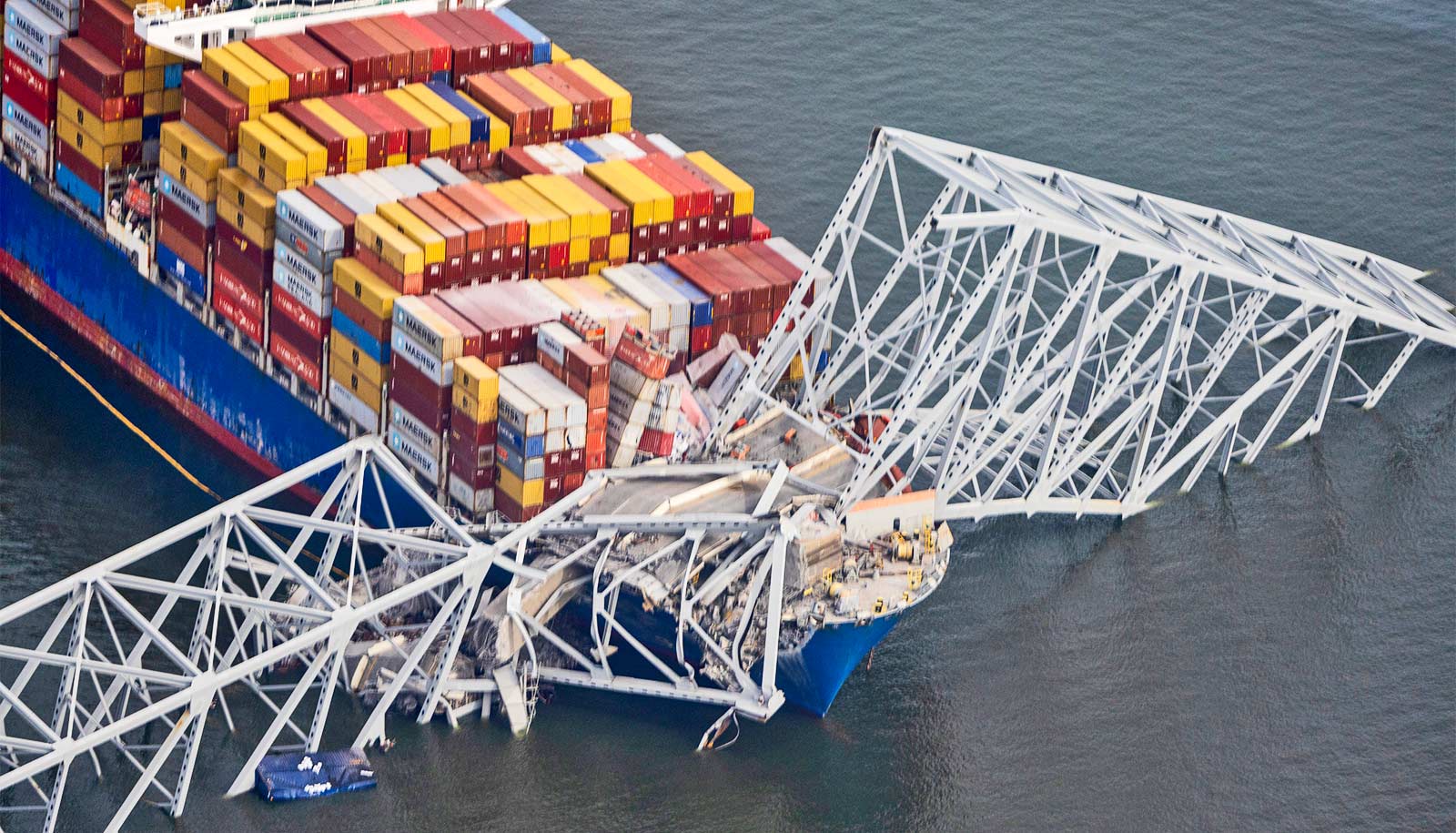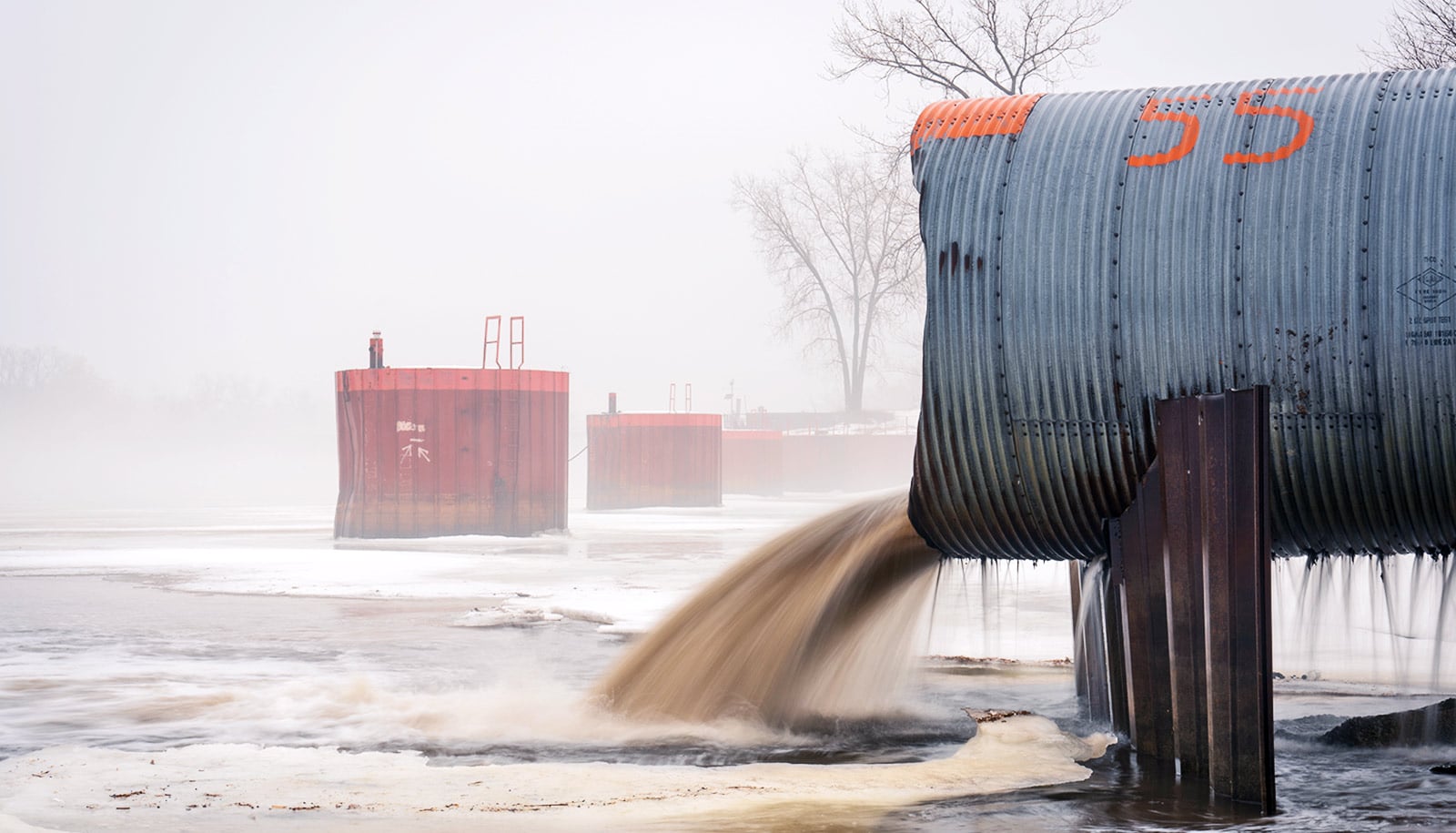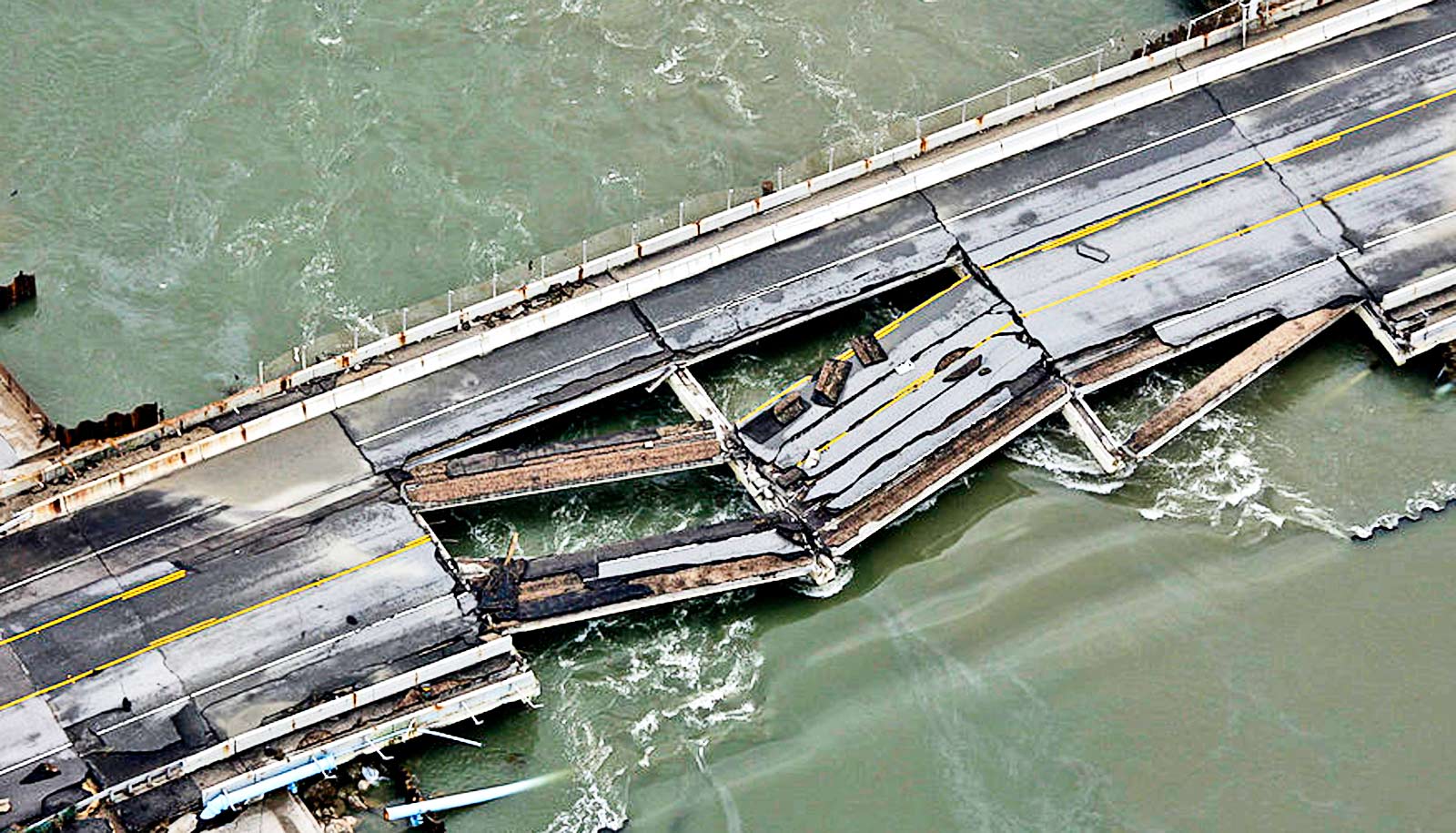
In an aerial view, cargo ship Dali is seen after running into and collapsing the Francis Scott Key Bridge on March 26, 2024 in Baltimore. (Credit: Tasos Katopodis/Getty Images )
Expert explains the bridge collapse in Baltimore
An engineer explains what happened to the Francis Scott Key bridge in Baltimore, including how its design played a role.
Johns Hopkins bridge expert Rachel Sangree talks about how long, continuous spans in the Francis Scott Key Bridge design played a role in its collapse.
Early on Tuesday, March 26, the Baltimore bridge collapsed into the Patapsco River after one of its supports was struck by a container ship, causing the structure to break apart.
The four-lane, 1.6-mile steel bridge , which opened in 1977, was named for the writer of “The Star-Spangled Banner.” It spanned the Patapsco at the entrance to Baltimore’s harbor, home to the Port of Baltimore, a major hub for East Coast shipping operations.
Sangree is an associate teaching professor in the civil and systems engineering department at Johns Hopkins University’s Whiting School of Engineering and also program chair in civil engineering for the Whiting School’s Engineering for Professionals. Sangree has expertise in structural engineering and historic structures, and she previously worked as a design engineer in the bridge group at Whitman, Requardt, and Associates, a Baltimore-based engineering, architectural, and environmental planning firm.
Here, Sangree explains what happened and what could be ahead:
The post Expert explains the bridge collapse in Baltimore appeared first on Futurity .
What do we know about the collapse of Baltimore’s Key Bridge?
A very large container ship collided with one of the bridge piers overnight, causing the central three spans of the Francis Scott Key Bridge to collapse into the Patapsco River. Tragically, some people were on the bridge at the time, and a search-and-rescue operation has been ongoing.
What was shocking for so many people to see when they woke up [that] morning was that all three main spans of the superstructure—the steel truss that was such an iconic part of the Baltimore skyline—progressively and quickly collapsed into the Patapsco River. This full collapse was not surprising given the way that the bridge was constructed of three continuous spans.
Using continuous spans increases the efficiency of the bridge, allowing engineers to economically construct long spans, like the one over the shipping channel. But it also means that when a pier directly supporting two of the spans was incapacitated, even the third span of the bridge—seemingly far from the site of impact—also collapsed.
Was there something about this particular bridge that made it especially susceptible to a near-total failure?
There was nothing inherently wrong with the Francis Scott Key Bridge design, but the pier was not designed to withstand the impact of a container ship of that size. The collapse is currently under investigation, so I would not want to speculate further at this time.
How long might it take to rebuild a new bridge at this location?
I can’t speculate on that either, but there are ways to accelerate bridge construction, and given how critical this crossing is to the Eastern seaboard, I am sure that when the time comes to start thinking about a new bridge, efficient construction methods will be considered. For comparison, when the I-35 Bridge in Minneapolis collapsed in August 2007, the bridge was replaced in just over one year, opening in September 2008. It’s not a perfect comparison because the sites and conditions are quite different, but it might help demonstrate what is possible.
Share this article:
This article uses material from the Futurity article, and is licenced under a CC BY-SA 4.0 International License. Images, videos and audio are available under their respective licenses.


